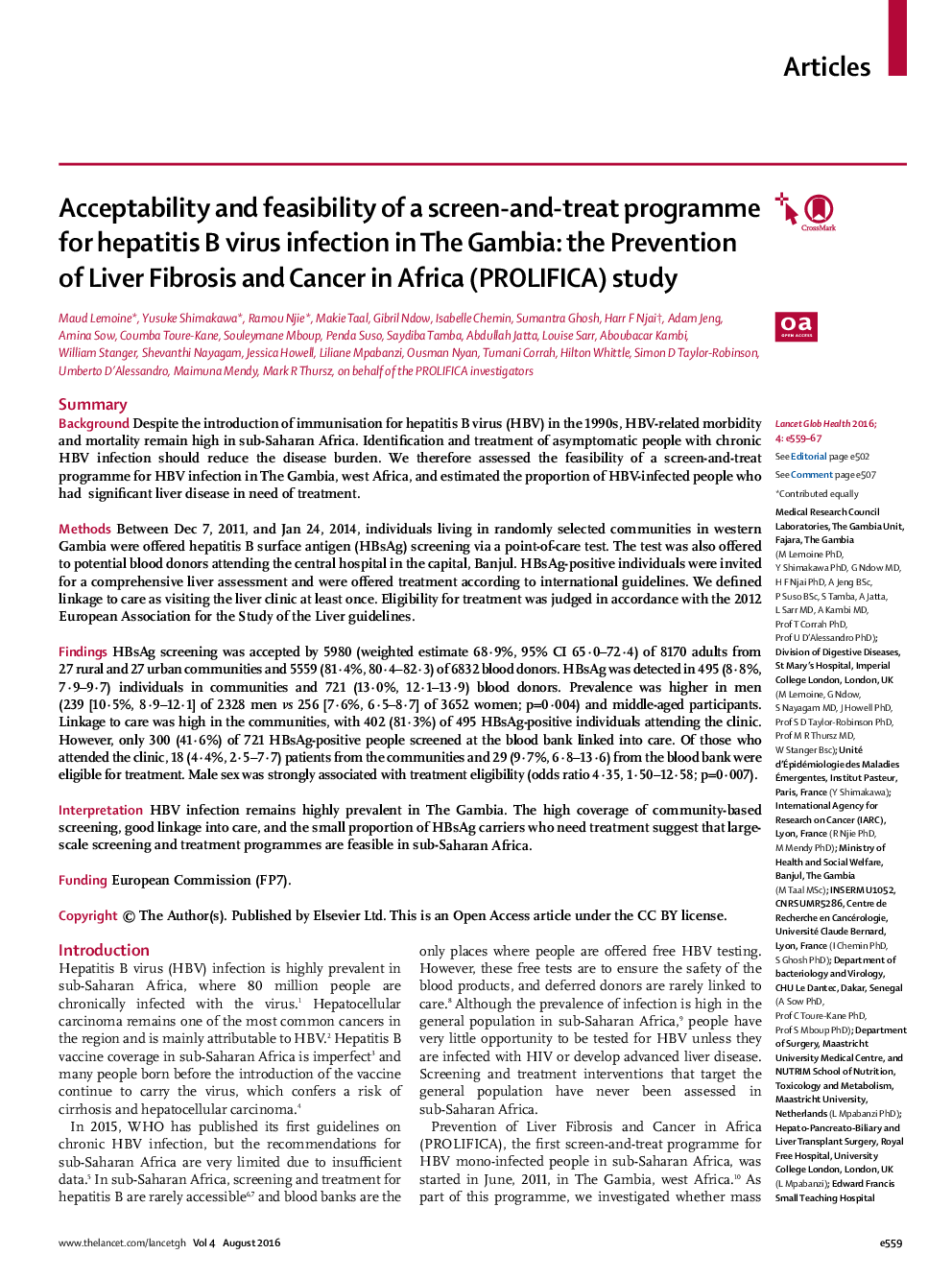| Article ID | Journal | Published Year | Pages | File Type |
|---|---|---|---|---|
| 3408715 | The Lancet Global Health | 2016 | 9 Pages |
SummaryBackgroundDespite the introduction of immunisation for hepatitis B virus (HBV) in the 1990s, HBV-related morbidity and mortality remain high in sub-Saharan Africa. Identification and treatment of asymptomatic people with chronic HBV infection should reduce the disease burden. We therefore assessed the feasibility of a screen-and-treat programme for HBV infection in The Gambia, west Africa, and estimated the proportion of HBV-infected people who had significant liver disease in need of treatment.MethodsBetween Dec 7, 2011, and Jan 24, 2014, individuals living in randomly selected communities in western Gambia were offered hepatitis B surface antigen (HBsAg) screening via a point-of-care test. The test was also offered to potential blood donors attending the central hospital in the capital, Banjul. HBsAg-positive individuals were invited for a comprehensive liver assessment and were offered treatment according to international guidelines. We defined linkage to care as visiting the liver clinic at least once. Eligibility for treatment was judged in accordance with the 2012 European Association for the Study of the Liver guidelines.FindingsHBsAg screening was accepted by 5980 (weighted estimate 68·9%, 95% CI 65·0–72·4) of 8170 adults from 27 rural and 27 urban communities and 5559 (81·4%, 80·4–82·3) of 6832 blood donors. HBsAg was detected in 495 (8·8%, 7·9–9·7) individuals in communities and 721 (13·0%, 12·1–13·9) blood donors. Prevalence was higher in men (239 [10·5%, 8·9–12·1] of 2328 men vs 256 [7·6%, 6·5–8·7] of 3652 women; p=0·004) and middle-aged participants. Linkage to care was high in the communities, with 402 (81·3%) of 495 HBsAg-positive individuals attending the clinic. However, only 300 (41·6%) of 721 HBsAg-positive people screened at the blood bank linked into care. Of those who attended the clinic, 18 (4·4%, 2·5–7·7) patients from the communities and 29 (9·7%, 6·8–13·6) from the blood bank were eligible for treatment. Male sex was strongly associated with treatment eligibility (odds ratio 4·35, 1·50–12·58; p=0·007).InterpretationHBV infection remains highly prevalent in The Gambia. The high coverage of community-based screening, good linkage into care, and the small proportion of HBsAg carriers who need treatment suggest that large-scale screening and treatment programmes are feasible in sub-Saharan Africa.FundingEuropean Commission (FP7).
